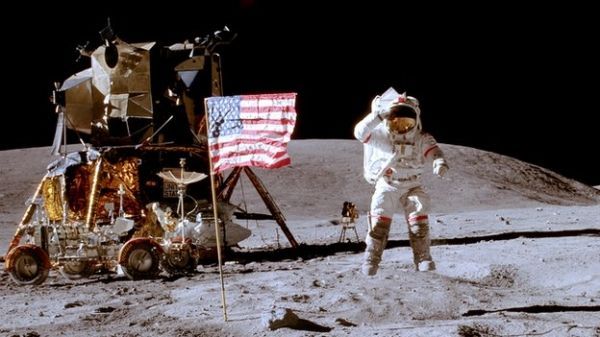
American flag on the moon.
Like
everything else in the Apollo 11 program, the construction,
transportation and raising of the American flag on the moon was
carefully thought out and planned. In 1992, Anne M. Platoff presented a
paper to the annual conference of the American Vexillological
Association on the topic. She covered in detail how NASA engineers
ensured that the flag planting went smoothly:Work on the lunar flag assembly began about three months prior to the Apollo 11 mission. Robert Gilruth, Director of the Manned Spacecraft Center (MSC) (footnote 8) and a member of the Committee on Symbolic Activities, asked Jack Kinzler, Chief of Technical Services Division at MSC, for ideas regarding the EVA. Kinzler suggested that a full-size U.S. flag could be deployed using a specially designed flagpole. He drew up a preliminary sketch (Fig. 2) and the idea was presented to the committee. Working with Deputy Division Chief Dave McCraw, he worked out the details of the lunar flag assembly over several days. The design was based on a number of engineering constraints. For example, to compensate for the lack of an atmosphere on the lunar surface, the flag assembly included a horizontal crossbar to give the illusion of a flag flying in the breeze. (footnote 9)
Two other major constraints were the weight of the assembly and the stowage space required. The team designed the entire assembly to be as lightweight as possible -- when completed it weighed only 9 pounds and 7 ounces. They reduced the size of the package by developing a two-part telescoping pole apparatus with a telescoping crossbar. It was also necessary to design a flagpole that could be easily assembled and deployed by astronauts wearing space suits. Space suits used for the lunar surface EVA were pressurized to approximately 3.7 pounds per square inch and, as a result, the amount of force that the astronauts could apply with their gloved hands was limited and their range of movement was restricted (Fig. 3).

No comments:
Post a Comment